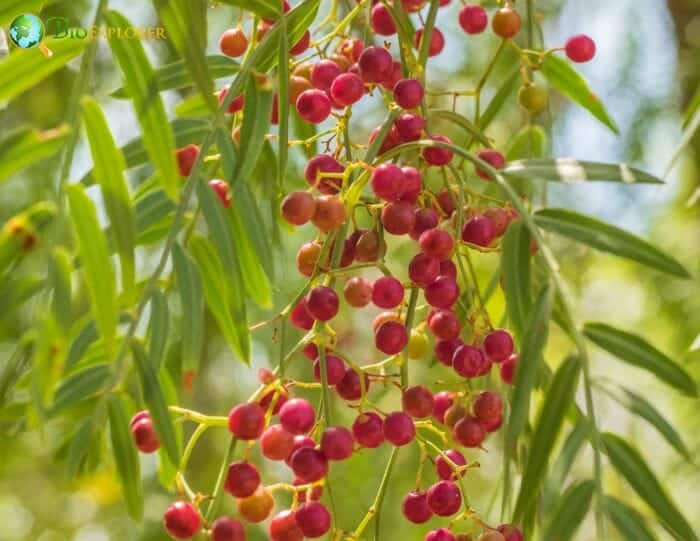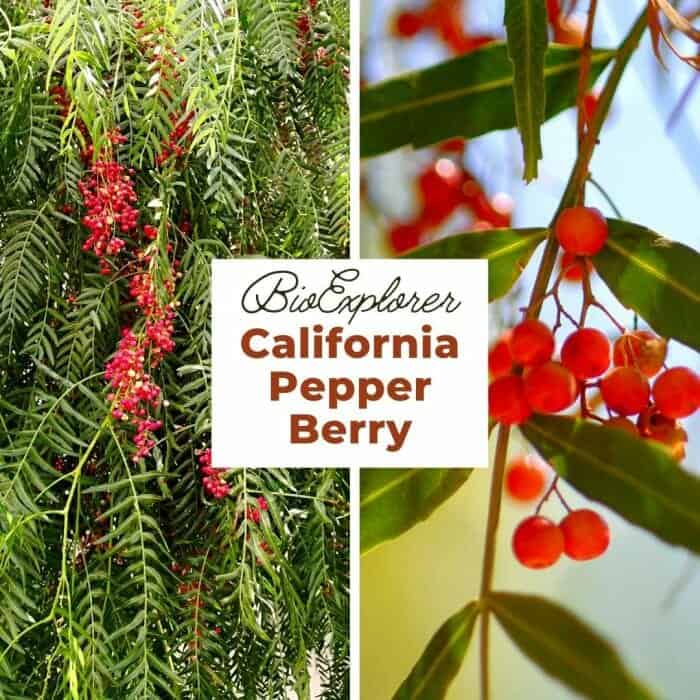
Although its name can be confusing as to its origins, the California Pepper Berry surprisingly originates from Peru. These pink berries aren’t really used for pepper in yet another misnomer, but only for their decorative charm.
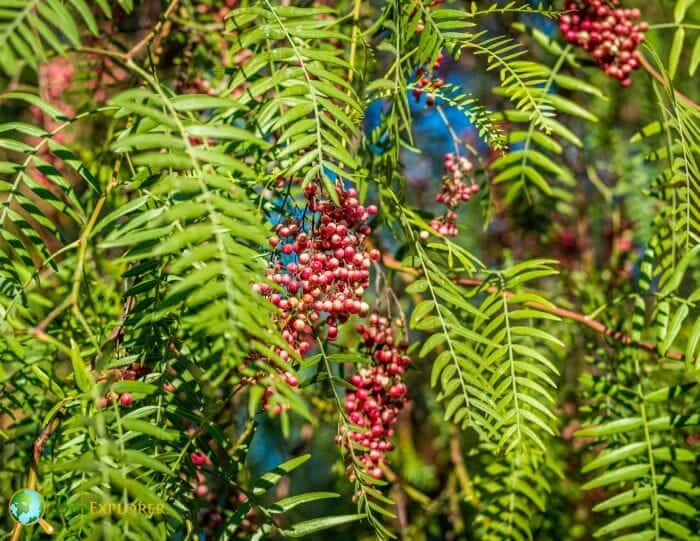
This evergreen tree can reach heights of up to 50 feet (15 meters). The California Pepper tree is native to Uruguay, Peru, Ecuador, Colombia, Chile, Brazil, Bolivia, and Argentina and belongs to the Anacardiaceae family[1].
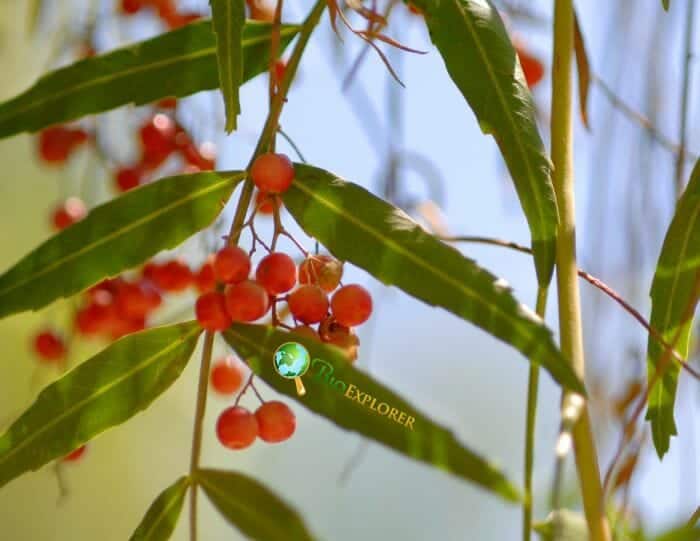
Some common names for the plant are Chilean Pepper Tree, California Peppertree, Brazilian Pepper-Tree, Australian Pepper, Molle Del Peru, Mastic Tree, False Pepper, Escobilla, Pepper Berry Tree, Pepperina, Pepper Tree, Pepper Rose, Weeping Pepper, Pink Peppercorns, and Pink Pepper.
The California pepper tree is a medium-sized, dioecious, branched, evergreen tree that grows to around 50 feet (15 meters) tall and 16 to 33 feet (5 to 10 meters) wide, with thin branches that form a spreading canopy shape.
The flowers of the California Pepper Tree are yellowish-white in color and grow profusely in hanging axillary clusters. The sepals are delta-shaped, 0.4 mm long; the petals are 1.5 to 2 mm long, yellowish-white, and narrowly ovate. The flowers are typically followed by small spherical fruits diameter 5 to 8 mm with woody seeds that change color from green to red, from purple or pink to black.
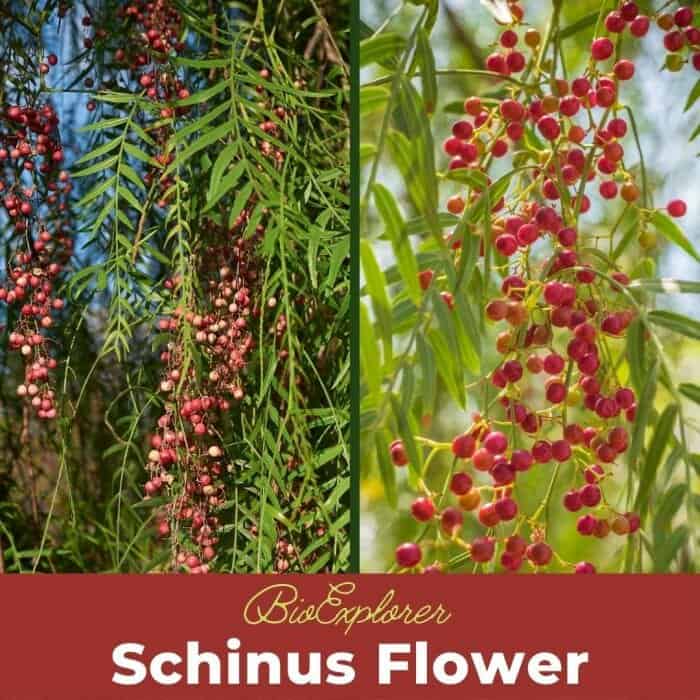
Schinus molle, also known as California Pepper Tree, Peruvian mastic, or Peruvian pepper, is an ornamental tree of the Anacardiaceae (cashew) family, native to South America, and is grown in warm regions.
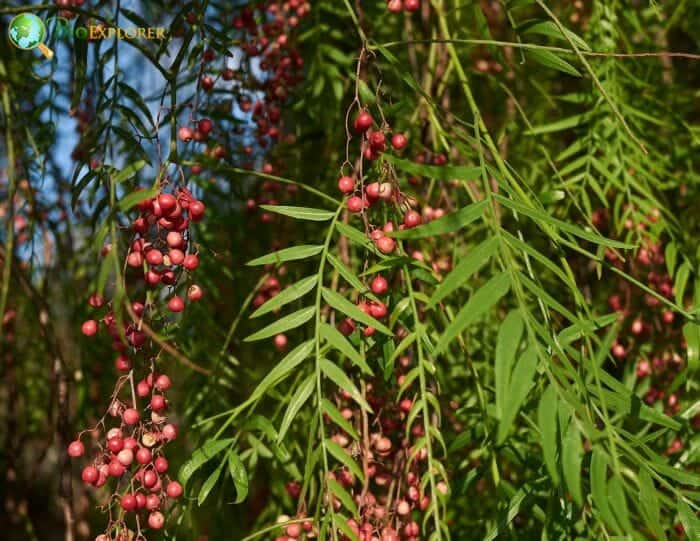
Over 30 species[2] of Schinus are known. Schinus plants have a long lifespan and rapid growth and can reach heights of up to 15 meters (50 feet). The plant has a large canopy, and the young branches often weep.
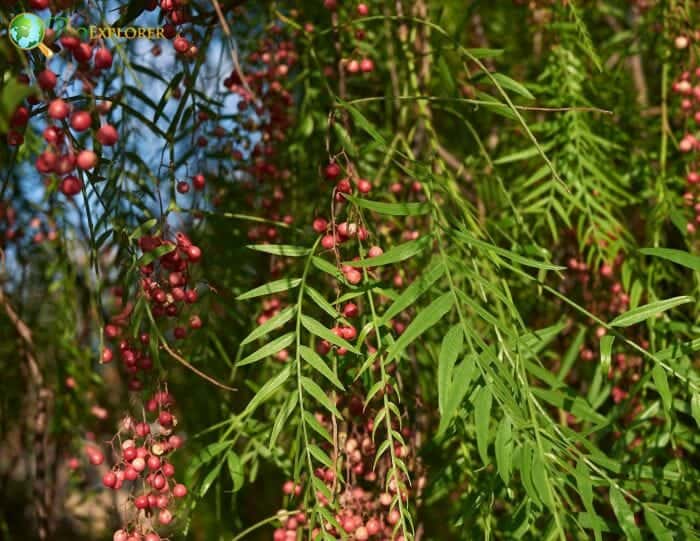
The long, compound foliage contains essential oil storage cells and gives off a pungent scent when broken open. The small white blooms are in clusters at the tips of the branches. Each small fruit has a rugged, dry grain surrounding a single seed.
